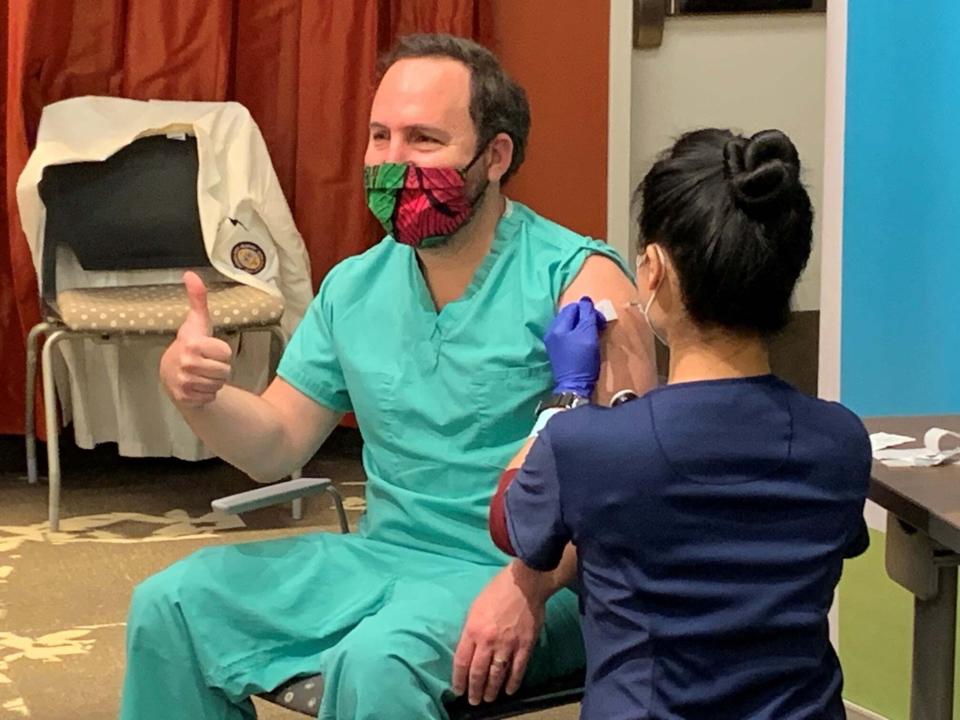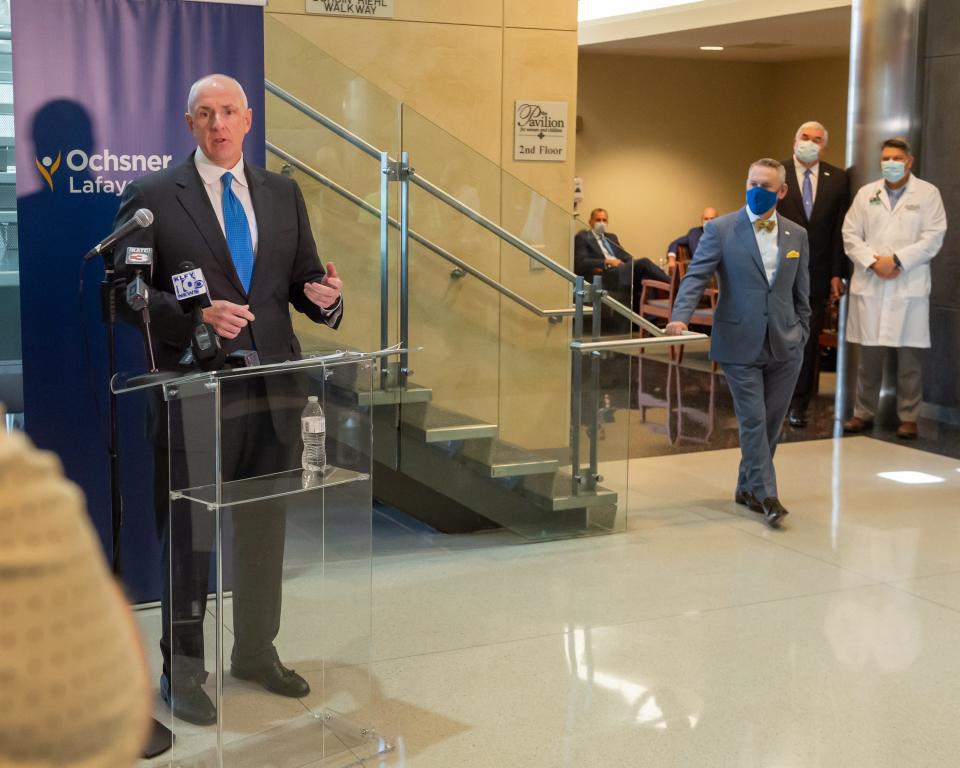Omicron slowing in some areas, peaking in others as Louisiana's COVID risk remains high
The omicron surge of COVID-19 cases has peaked in some parts of Louisiana and should peak soon in others, according to the Department of Health, though the virus’ spread remains high.
“It’s pretty clear that different regions of the state are ahead or behind others, so the state is not exactly at the same place throughout the whole state,” Louisiana’s Health Officer Dr. Joseph Kanter said during a briefing on the virus’ spread Thursday.
CONSIDER SUBSCRIBING TODAY: Help support local journalists like Andrew Capps
“The New Orleans area, for example, probably peaked a couple of weeks ago, and it’s coming down. Other areas, for example the Lafayette and Lake Charles areas, are still going up. So when you look at the state as a whole, we’ve peaked and begun to come down, but there still are a few regions of the state that are going up and we expect will be peaking very soon.”

New cases of COVID-19 around the state have leveled off in recent weeks, though the improvements have been concentrated around the New Orleans area, where the omicron variant first became widespread within Louisiana.
Omicron: COVID-19 cases have slowed in Louisiana. Has the state reached a peak?
The Lafayette, Lake Charles and Alexandria regions are showing similar patterns in their COVID-19 cases, State Epidemiologist Theresa Sokol said Thursday, as the number of new cases they are reporting has slowed slightly but hasn’t materialized into a firm downward trend.
“If you look at the most recent average daily incidence (of new cases), it's a decline from what they've seen at the highest point in the peak so far. But we're not officially in a downward trajectory yet. We're not seeing a negative slope,” Sokol said.
Story continues below.
The piecemeal decline in new cases around the state has been mirrored by a similarly regional decline in hospitalizations for the virus in recent weeks.
Ochsner Health CEO Warner Thomas said Monday that COVID-19 hospitalizations in its New Orleans facilities peaked around Jan. 11 and appeared to be slowing in other parts of the state.
Ochsner: Omicron-fueled hospitalizations may have already peaked at facilities in Louisiana
“The peaks are different based upon which market you’re in. It does appear as though that Jan. 11 was around the peak for the New Orleans area. It does look like the Northshore’s a similar situation,” Thomas added. “As you get into Baton Rouge, Lafayette, North Louisiana, it does seem like there’s probably a one- to two-week delay in the peak there.”

Though the omicron variant has fueled a record-setting surge of new COVID-19 cases, it has not topped prior surges in the number of people it has hospitalized with the virus. Last year’s late-summer delta variant surge hospitalized more people in Louisiana, which Kanter attributed to the state’s relatively low vaccination rate at the time.
For the omicron surge, hospitalizations statewide also appear to have peaked, and Kanter said he is optimistic they will not rival the state’s worst surge.
“Thankfully, I don't think we're going to get to that point during this surge. We're at just over 2,000 patients now, and we're on a downward trend, so I don't think we're going to reach our delta peak,” he said.
But Louisiana is still in the midst of the largest surge in new COVID-19 cases the state has seen yet, and Kanter cautioned that even though the peak appears to have passed, the virus is still very prevalent all around Louisiana.
“Peaking is important, but when you’re on the other side of the mountain, you can still be awfully high up off the ground, which is where we are now,” Kanter said.
“We’re going in the right direction. I’m rather confident that the worst of this particular surge is behind us. But cases are going to be really high in Louisiana for the next few weeks. There’s still going to be a lot of transmission.”
Follow Andrew Capps on Twitter or send an email to acapps@theadvertiser.com.
This article originally appeared on Lafayette Daily Advertiser: LDH: Omicron slowing in some areas, peaking in others, surge not over

